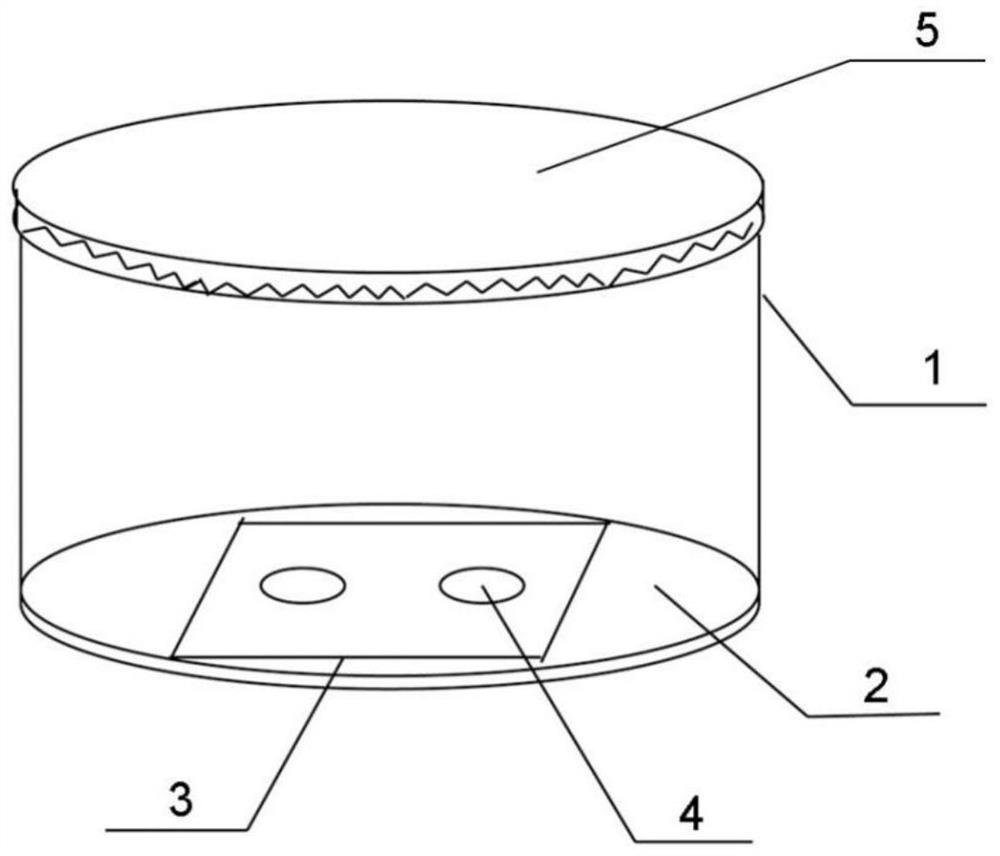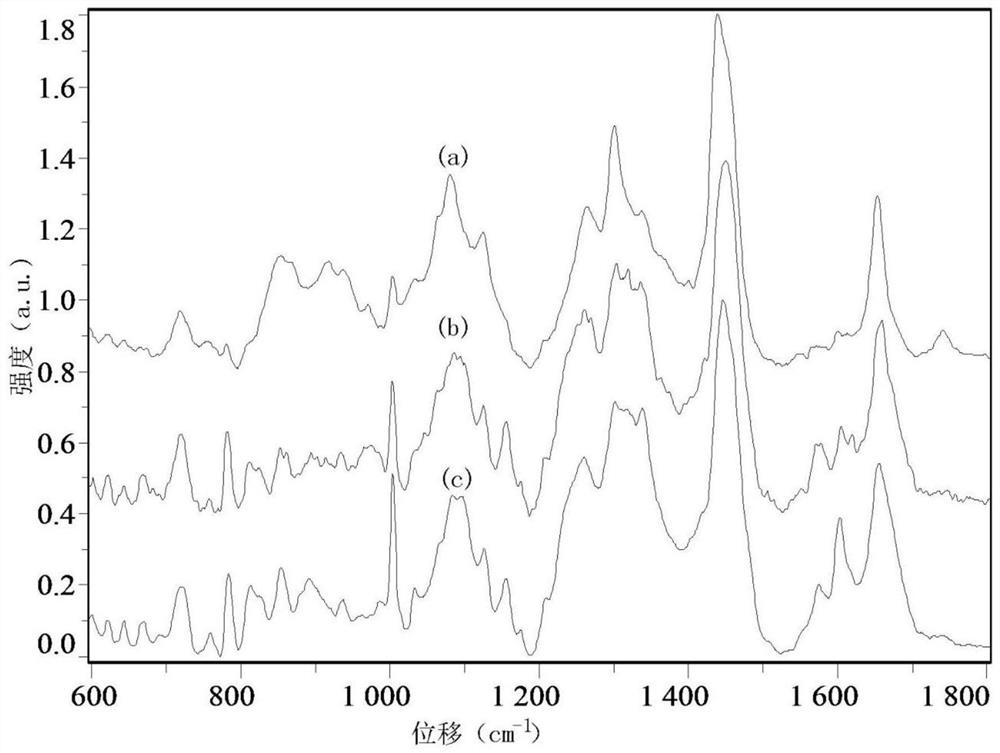Liquid sample cell for microscopic Raman spectroscopy detection of aerobic or facultative anaerobic pathogenic microorganisms
A technology of pathogenic microorganisms and liquid samples, which is applied in the field of liquid sample pools, to achieve the effects of reducing environmental pollution, having biological safety, and slowing down sample volatilization
- Summary
- Abstract
- Description
- Claims
- Application Information
AI Technical Summary
Problems solved by technology
Method used
Image
Examples
Embodiment 1
[0045] Embodiment 1 liquid sample cell
[0046] Such as figure 1 and figure 2 As shown, the liquid sample cell is composed of a sample cell body, a top cover 5 and a double-sided polished cover glass 3 . A quartz slide is selected as the cover glass 3, the sample cell body and the top cover 5 are both formed of polystyrene, and the top cover 5 is connected to the top of the sample cell body in a rotating and sealed manner. The diameter of the sample cell body is 30 mm, and the height is 15 mm. The sample cell body has a side wall 1 and a bottom wall 2, and the thickness of the bottom wall 2 is 1.5 mm. The bottom wall 2 is provided with two circular through-holes 4 with a diameter of 3mm, and the cover glass 3 is adhered to the outer surface of the bottom wall 2 with epoxy acrylate UV glue and covers the through-holes 4, thereby forming two Detection hole. Wherein, the thickness of the cover glass 3 is 0.13 mm, the length is 22.5 mm, and the width is 4.5 mm.
Embodiment 2
[0047] The property test of embodiment 2 liquid sample cell
[0048] Add the concentration of 20 μl to a detection hole of the liquid sample pool of embodiment 1 and be the red pigment water droplet of 3 μ g / ml, screw on the top cover (recorded as " test 1 "); Add 20 μl of red pigment water droplets with a concentration of 3 μg / ml into the sample pool (with no detection hole), and cover the top cover (the top cover has no screw-on structure and cannot be screwed tightly) as a control (referred to as "control"). A micro sampler (with a range of 10 μl) was used to measure the amount of sample remaining in the liquid sample pool, and the results are shown in Table 1.
[0049] Table 1 Sample retention under different storage times
[0050] initial sample size 1 hour reserve 2 hours reserve 3 hours retention test 1 20μl 17.8μl 15.8μl 12.5μl control 20μl 12.3μl 5.5μl 0μl
[0051] It can be known from Table 1 that the liquid sample ...
Embodiment 3
[0052] Example 3 Collection of Cell Raman Spectrum
[0053] (1) Wash one or more samples of pathogenic bacteria once with physiological saline, and suspend the pathogenic bacteria in the physiological saline.
[0054] (2) Add 20 μl of the sample with pathogenic bacteria into the detection hole of the liquid sample pool;
[0055] (3) The liquid sample pool is placed on a micro-Raman spectrometer to capture a single cell to obtain a Raman spectrum.
[0056] Figure 3-4 The Raman spectra of different fungi and bacteria measured by the above method are shown, among which (a) is the Raman spectrum of Cryptococcus neoformans, (b) is the Raman spectrum of Candida albicans, (c) is the Raman spectrum of S. The Raman spectrum of yeast, (d) is the Raman spectrum of Acinetobacter baumannii, and (e) is the Raman spectrum of Pseudomonas aeruginosa.
[0057] Depend on Figure 3-4 It can be seen that the liquid sample pool of the present invention can be used to detect microscopic Raman...
PUM
| Property | Measurement | Unit |
|---|---|---|
| width | aaaaa | aaaaa |
| width | aaaaa | aaaaa |
| diameter | aaaaa | aaaaa |
Abstract
Description
Claims
Application Information
 Login to View More
Login to View More - R&D
- Intellectual Property
- Life Sciences
- Materials
- Tech Scout
- Unparalleled Data Quality
- Higher Quality Content
- 60% Fewer Hallucinations
Browse by: Latest US Patents, China's latest patents, Technical Efficacy Thesaurus, Application Domain, Technology Topic, Popular Technical Reports.
© 2025 PatSnap. All rights reserved.Legal|Privacy policy|Modern Slavery Act Transparency Statement|Sitemap|About US| Contact US: help@patsnap.com



